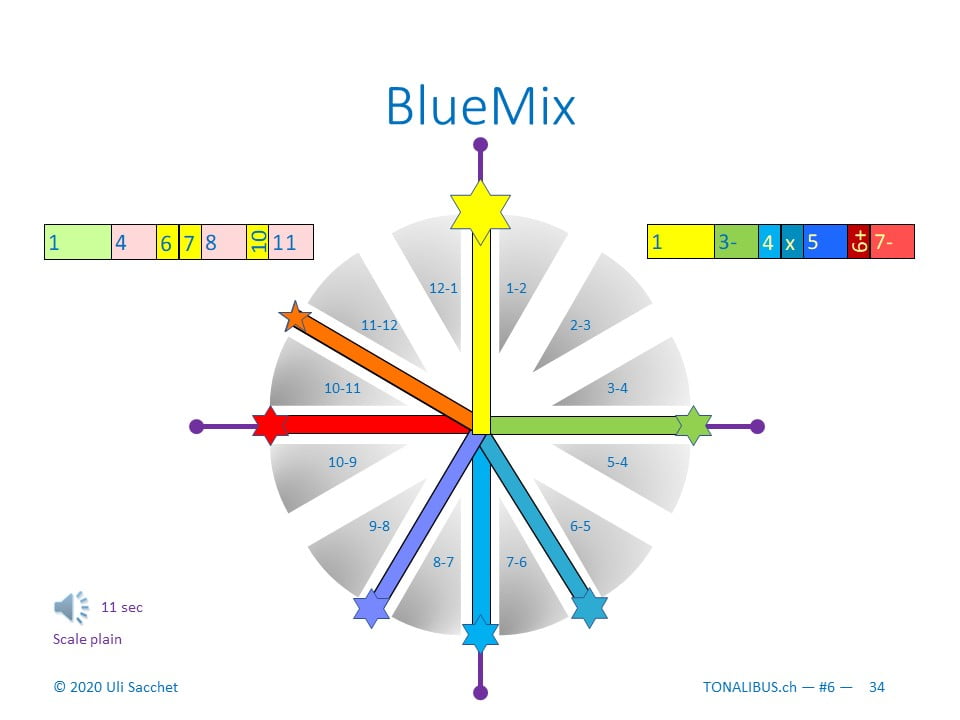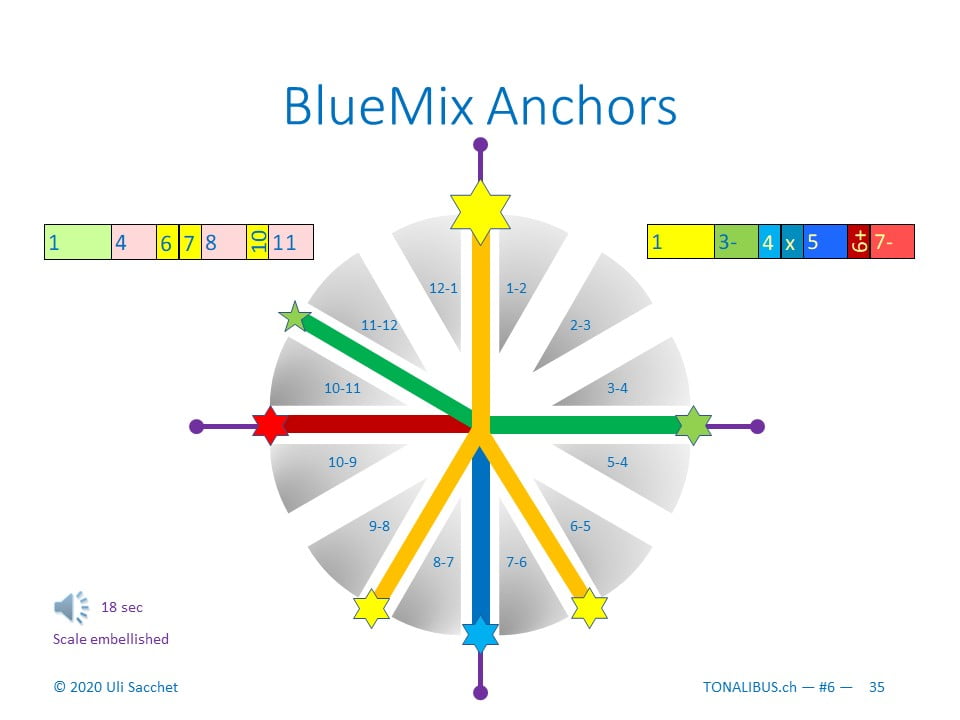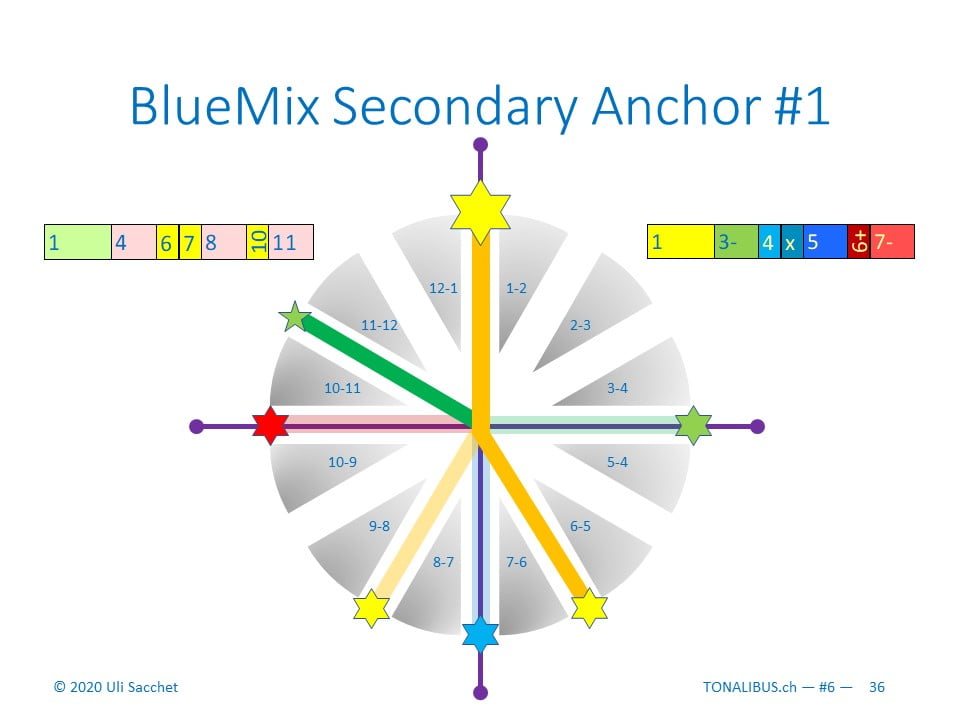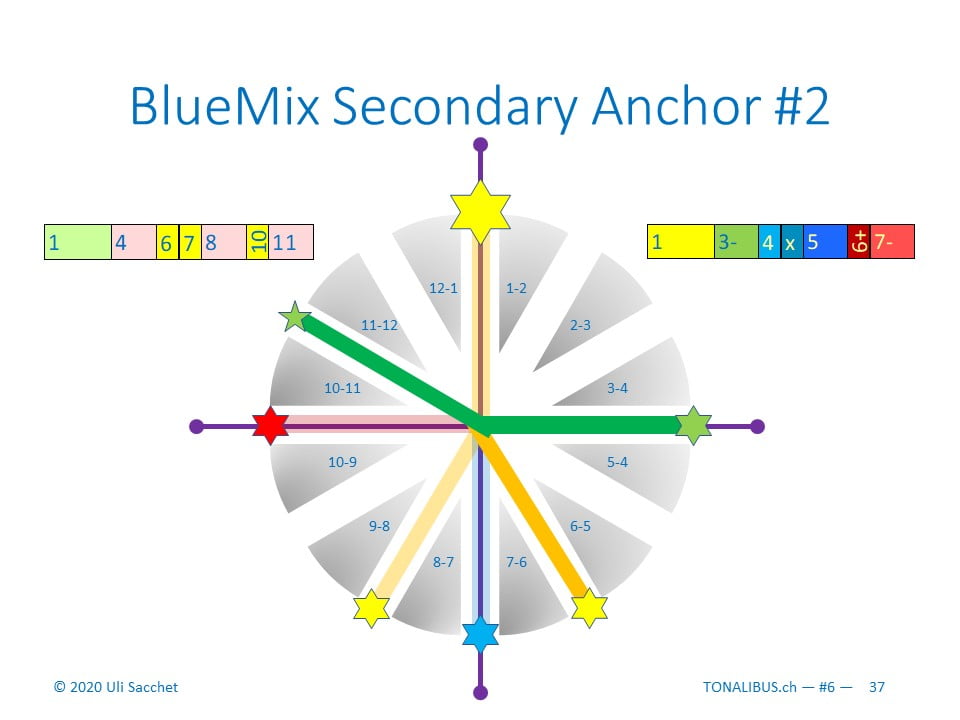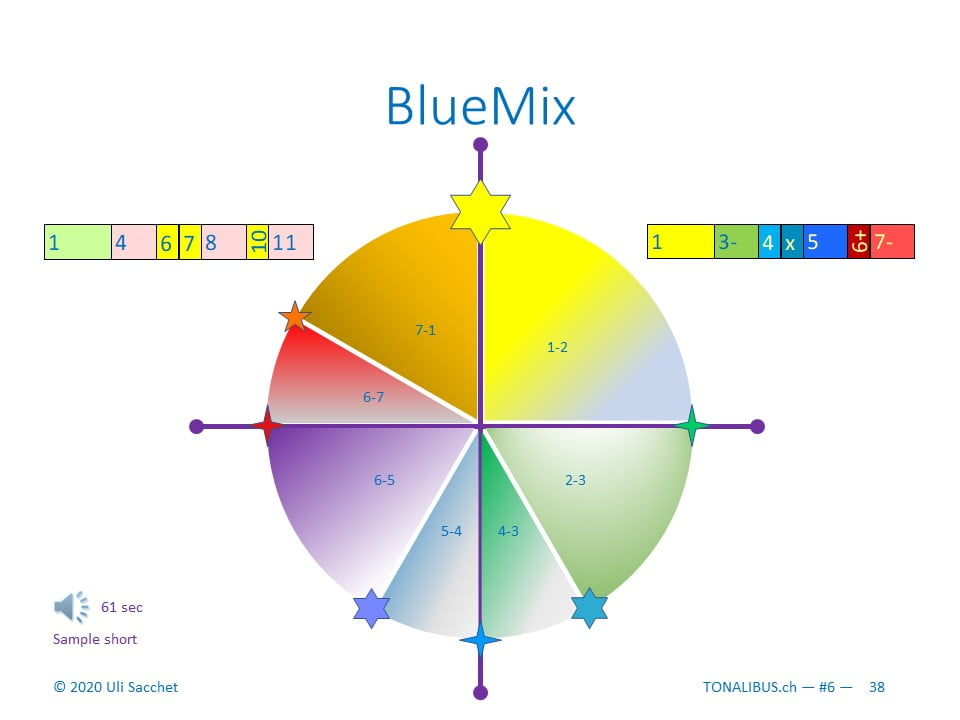BlueMix — a Core tonality and tritone or blues tonality
Harmonic visuals
Scale and sound samples
You may enjoy a sound sample or tonality loop as sound mantra for contemplation or meditation, for upliftment and focusing, or simply as soothing background sound for relaxation and regeneration.
Characteristics
- Tritone or blues tonality matrix: The octave includes the tritone plus for a heptatonality one, for a hexatonality two, and for a pentatonality three Reach steps (augmented seconds). These take off from the fundamental or from the quint. They are not framed by half steps (or semitones), of which there are three for hepta-, two for hexa-, and one for pentatonalities. When more than one of them, then some are consecutive.
- As Core tonality, BlueMix includes all four corners of the sound temple.
- BlueMix: The name indicates that the Reach step is in the lower tetrachord and that the upper tetrachord is DorMixolydian.
- Step pattern: Ascending from the fundamental (tonic or Do), a Reach step leads to a whole step followed by two consecutive half steps. Then comes a whole step and a half step. Finally a whole step leads up to the octave.
- Scale intervals: Minor third, quart, tritone, quint, major sixth, and minor seventh.
- Penta- and tetrachords: The lower pentachord is Blue. The upper tetrachord is DorMixolydian.
- Harmonic axes: There are two axes at a right angle to each other, one vertical the other horizontal, N-S and E-W.
- Primary harmonic anchors: The fundamental or North anchor is fully present. The East anchor is partial, with its head and only its right leg. The contrast or South and the West anchor are also partial, both with only their heads and no legs.
- Secondary harmonic anchors: Two secondary anchors are present, SE and WN. Both emphasize the fundamental North anchor, the quart, and the partial East anchor.
- Four corners of the sound temple and minor seventh: Present are the heads of all four primary anchors, and the fundamental or North anchor is complete. The one extra element is the minor seventh that contributes a slight regressive or minor tonal flavor.

